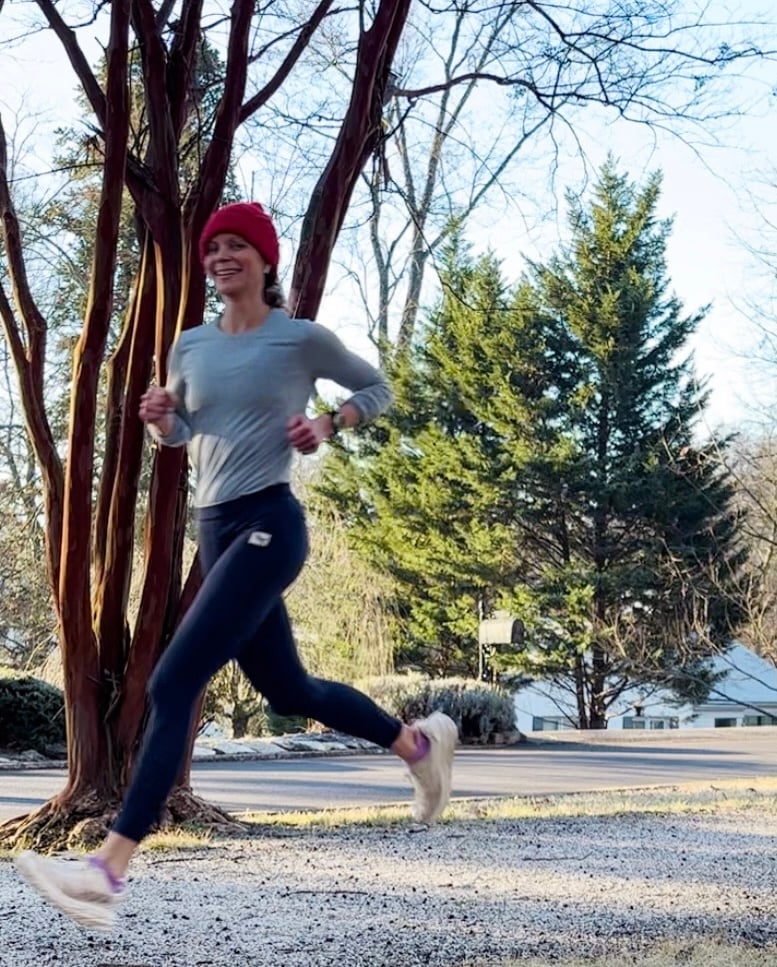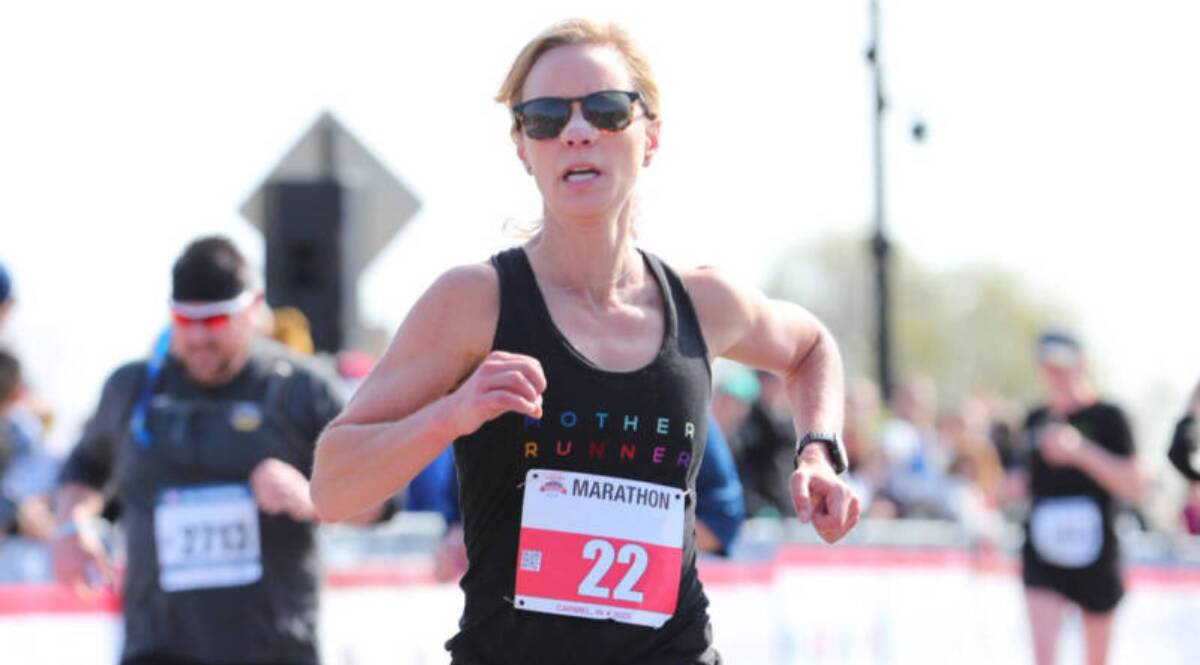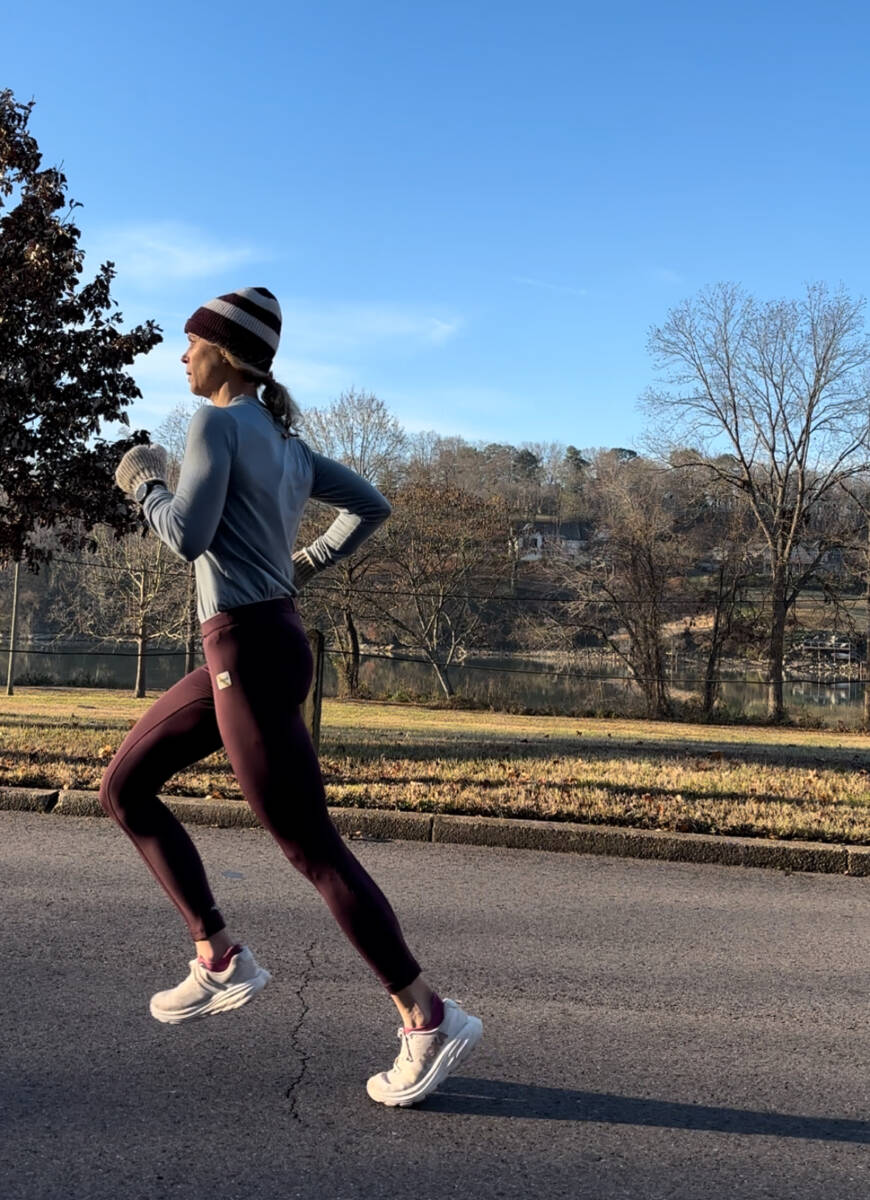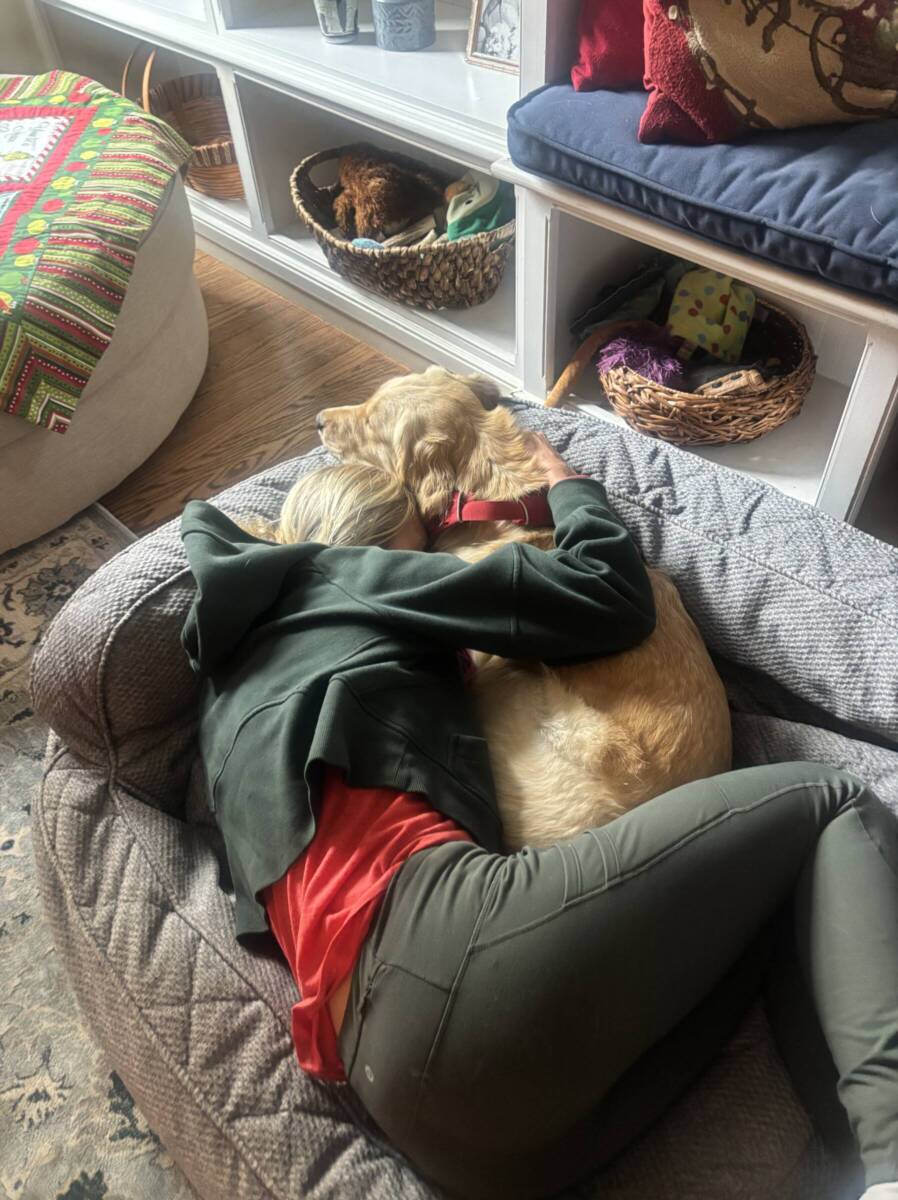Bust Through a Running Plateau (8 Training Strategies)
The other day, a new athlete came to me frustrated by a running plateau. She said her running pace had slowed, and not budged for years despite running consistently and working with a running coach. A look at her run training and a few follow-up questions, and it was clear to me why.

A running plateau is when your running performance isn’t improving despite running regularly. Reasons for a running plateau are often rooted in your training, lifestyle, or overall health.
For this runner, I asked about her latest lab work. How were things like her ferritin and hormone levels? I learned her testosterone was low, hurting her recovery and leading to injuries. Next, I looked at her training. There was very little speedwork—no speed stimulus to activate those fast twitch muscle fibers and teach the body to run fast. I asked why and she shared her coach was afraid she would get injured.
If you’ve hit a plateau in your running, it’s important to take a step back and look at all the factors that can impact your running performance. This can be a clue as to what needs to change or be optimized.
Jump Ahead:
- A real-life running plateau example
- What do I mean by running plateau?
- What are common reasons for a running plateau?
- 8 Ways to Bust Through a Running Plateau
- 1. Optimize Your Health.
- 2. Run less.
- 3. Run more.
- 4. Add Variety.
- 5. Add a down week.
- 6. Get stronger.
- 7. Focus on weaknesses in your training.
- 8. Pick a different running goal.
A real-life running plateau example
This runner said her running paces were the same every day, but she kept getting injured. She also shared she had low testosterone—these two factors can lead to a training plateau. She got treated for low T, we build up her base, held it steady, and then began dosing some speed. Her easy pace quickened and she ended achieving all of her race goals including running her first marathon and running her master’s half marathon PR!
But not every runner hits a running plateau for the same reason. Running is impacted by many variables—and therefore, many things can cause your running to hit a performance plateau. Read more about that below.
8 Ways to Bust Through a Running Plateau
1. Optimize Your Health.
What it is: As mentioned, deficits in things such as vitamin and mineral levels, or hormone imbalances, could lead to a plateau in your training. That has happened to me. (It was one of the first posts I ever wrote for this website).
In addition, lifestyle habits including how much sleep you get (crucial for recovery and injury prevention), how well you fuel, and your stress levels all play a role in your running performance. I personally have had all of these factors negatively impact my running. (Hindsight is truly 20/20).
Also, take note of how you feel overall—you could be fighting an illness or your menstrual cycle could be making you feel sluggish.
What it feels like: In many cases, your easy runs will require too much effort. You won’t hit your workout paces. Recovery will take longer. And you will feel fatigued, low energy, and likely irritable.
How to fix it: I recommend getting lab work done every 6 months. If you haven’t had your blood drawn, ask your PCP for a full panel including hormone levels, ferritin, B12, magnesium, and Vit. D. Note where you are in your cycle for reference with your hormone levels. You can also use a service like Inside Tracker which is specifically for athletes. (Use code WHITNEYPRO25 for 25% off! )
It’s best if you are working with a provider who will help you optimize your levels rather than just leave you to figure it out on your own because it can be very confusing! (If you need quality supplements, check out Previnex which I can’t recommend enough. They’ve helped me optimize my levels.
Also, look at your daily habits. Make sure you are getting enough sleep, eating enough food, and resting enough between hard workouts. Sometimes just optimizing your sleep and fuel is the simplest way to bust through flat lines in training. If life stress is making you feel spread thin (stress is stress to your body), consider decreasing training until things normalize. These are much-needed changes for any person to stay healthy.
2. Run less.
What it is: Overtraining is when you’re running too much, and your body doesn’t have enough time to recover, and you get stuck in a training hole.
When we run, our bodies get damaged. There are micro-tears in our muscles, for example, that repair (mostly in our sleep) and build back stronger. If your body doesn’t have enough time to recover, then it’s getting weaker not stronger with your running.
What it feels like: With overtraining, you’ll feel tired or fatigued a lot of the time, easy runs will feel hard, your heart rate may be higher, and you’ll have a hard time hitting workouts.
How to fix it: If you feel like you could be running too much or overtraining, the best thing to do is to take an extra rest day a week or cutback on your overall mileage by about 30 percent (essentially give yourself several down weeks in a row). You don’t have to train this way forever, but giving your body the time it needs to catch up can make you bust through your running plateau.
It’s doing more by doing less. Sometimes running more isn’t the solution, running less is! More is not always better! I recommend trying this for at least one month and see how you feel.
3. Run more.
What it is: If you can run too much, you can also run too little. Your body needs a regular training stimulus to make adaptations. If your running is inconsistent (and be honest with yourself), then it’s not going to be able to make the changes necessary (like a larger heart, stronger muscles, more efficient fuel use, more mitochondria, and capillaries, for example) to become better at running.
The bare minimum you need to run to make some physiological adaptations are three running sessions a week for at least half an hour. Running only two times a week or for a week on and a week off, is not going to make you run faster. This is a sport of commitment and patience. You must put in the work to see results.
What it feels like: Most runs feel hard—like the first time. You are sore afterward and it takes you more than a couple of days to recover and feel like you can run again.
How to fix it: Be more consistent with your running! Set a goal. Get one of my free training plans. And get after it. If you can’t stick to running regularly, take a step back to see the hurdles and figure out how to remove them. Check out my accountability coaching.
4. Add Variety.
What it is: You run the same distance and pace every day—or have been doing the same prescription of workouts in your training cycle, and your body doesn’t need to adapt anymore. So, it gets stuck in a rut. It runs the same pace because that’s what it’s been programmed to do.
What it feels like: Boring. You (and your body) are on auto-pilot.
How to fix it: The human body needs a challenge to change with some hard workouts. It needs to know what it’s like to run different paces, different distances, and varying terrain. So, switch things up gradually with faster running. DO NOT start throwing in speed and hills, etc. all it once. This is where a running coach (ahem…) can help you, or a training plan so you dose the stimulus correctly and don’t get hurt.
Here are some examples of workouts:
- If you only run the same 5-mile loop every day, try doing some speed play (e.g. a fartlek) where you run fast for a minute and easy for a minute ten times, for example. Or finish the final mile 30-60 seconds faster than easy. Or do a progression run, where each mile is 10 seconds faster than the one before it.
- Also, try extending the loop one day a week so your body learns to do longer runs.
- If you have never done speedwork, start with strides. Learn how to run these short bursts of speed here.
- If you only ever run flat terrain, throw in some hill work starting with hill strides. Then do hilly runs where you run the uphills hard, and downhills easy. Progress to hill repeats.
- If your training only includes tempo runs, start doing speed interval training including at VO2 Max workouts.
Truly the opportunities are endless. But introducing new stimulus needs to be done carefully so you don’t get hurt. Remember that a little bit goes a long way.
5. Add a down week.
What it is: If you are training for a marathon or long-distance race, or doing a new training plan, your legs may feel tired, or even dead. This is normal.
Almost always towards the end of a marathon training cycle for me, my easy runs feel so hard. My Garmin tells me I am losing fitness. And I start to panic. Am I overtraining? Will I blow up on race day?
But this is a natural phenomenon in run training called Cumulative Fatigue. (I wrote more about it here). And, surprisingly, you want it. Your body is broken down, so to speak, but a rest (aka the marathon taper or a cutback week) allows your body to build back up and bounce back stronger.
What it feels like: Most runs feel like you are running through quicksand. Your legs feel heavy and tired. It usually happens for about two weeks—and then your body recovers or adapts.
How to fix it: Typically, if you are feeling cumulative fatigue, it should be right before a reduction in training. If your legs have been feeling tired and less poppy for more than two weeks, it’s time to reduce your training for a week. Take a look at your training–have you had a week with reduced volume in the past month? If not, try reducing your training volume by thirty percent or add in an extra rest day.
If that doesn’t change how you feel, continue the mini-taper—or consider looking at other factors.
6. Get stronger.
What it is: Many runners don’t strength train enough to boost their running fitness. But strength workouts specific for runners (like my 4-month training program) can improve your running fitness, as can hills.
Strength training workouts complement your run training so that you work your body hard on hard days, and optimize recovery on easy days. They also help balance out the work running does to prevent injuries.
What it feels like: When you’re running, you feel like you could have more power in your legs. Specifically, your legs get tired on long runs, workouts, and running uphill.
How to fix it: If you haven’t really strength trained for your running, this is really exciting! Because I think you will notice a difference with just a little bit of work! Aim for two strength sessions a week for 30 minutes. (Check out my complete Weight Training for Running Guide here).
Also, start incorporating one day of hill strides (4 by .o3 uphill faster, downhill easy) after an easy run, and then include a hill workout every 2-4 weeks. Some examples of hill workouts:
Find a moderate-grade hill. Do a 2-mile warm-up. Then do:
- 10-12 by 200 meters hard, down easy
- 10 by 1 minute up, down easy.
- Hilly route where you run the uphills hard and downhills easy.
- 8 by 400m hard, down easy
Run two miles easy to cool-down.
7. Focus on weaknesses in your training.
What it is: Running is a varied sport. Contrary to the belief of many non-runners, running isn’t all about just running one pace, one distance. There is a lot that goes into our sport! Therefore, there are always places we could improve.
What it feels like: You have a great kick or nail your interval runs, but you struggle in other aspects like your long run pick-ups, progressive pacing, uphills, or tempos, for example.
How to fix it: Get out your training log or Strava (if you don’t log your training, start!), and reflect on what has gone well and what hasn’t. If you notice that you dread tempo workouts or the effort is harder than prescribed, for example, start there. Do a periodized training where you focus on a tempo run for 4-6 weeks as part of your training cycle.
Brad Hudson in the book Run Faster, has specific advice on how to break through a workout plateau related to training weaknesses:
- Neuromuscular fitness is lagging: sluggish in workouts and up hills, thresholds breathing is okay but legs feel tired. Attack with strides and speed training for 2-3 weeks.
- Aerobic fitness is lacking: long runs are hard runs, faster workouts get you tired on last reps, and with tempos your legs feel fast but breathing is labored. Attack with some added miles and a bit longer progression runs for 2-3 weeks.
- Specific endurance is lacking: you have a tough time holding race pace, fatigue early in pace-specific workouts and you don’t do well in your tune-ups. add some race-specific workouts (at pace or a bit faster) in for 2-3 weeks.
8. Pick a different running goal.
What it is: Your body and mind are OVER training for the same goal, going after that elusive PR. You need something to reinvigorate you. Go after a new PR!
What it feels like: You’re tired of the marathon or half-marathon grind. You dread long runs. Your legs feel tired of them, too. You’re overall unenthused about your training.
How to fix it: Give yourself permission to step away from your running goal for a training cycle to go after different distances.
Pick a new goal like a fast mile or 5k instead of the marathon for example. Running shorter for faster or running longer, can only help you at other distances. It makes you a more well-rounded runner which can address weaknesses in your training. For example, doing a speed cycle for your next training cycle can home your body’s ability to run faster in the marathon.
Running plateaus happen to almost runners of all levels, even elite runners and professional runners. So, note it as a rite of passage. Then step back, reflect on what could be changed, then go for it! These training tips could help you take your running to the next level.
Also, be sure to check out my article: 9 Reasons You Aren’t Running Faster
What are common reasons for a running plateau?
Common reasons for a running plateau are going to come from three main arenas: your training, your lifestyle, and your health.
- Your training: Reasons for plateau could be that you’re running too much, too little, not with enough variety of paces and distances, or with too much, for example. If an athlete has plateaued, it is first vital to assess recent training. Are they training as much as they thought they had, or is there more inconsistently in their training than realized? Is there periodization and structure, or has training been less structured than realized? Have they been overtraining without proper recovery programmed?
- Your lifestyle: You could hit a running plateau because you’re stressed out, you’re not fueling right, or not sleeping enough to recover between runs, for example.
- Your health: Factors such as iron/ferritin, B12, vitamin D, and hormone levels can impact how you feel on your runs. An easy run can feel much harder when your body doesn’t have the optimum supplies to work efficiently.“Sometimes, plateaued performance can be due to low iron levels but you never want to supplement without knowing,” adds Norris.
Note: I am not a doctor! I am a running coach. If you have concerns about your health, go talk to your trusted healthcare professional! Have you hit a running plateau?






